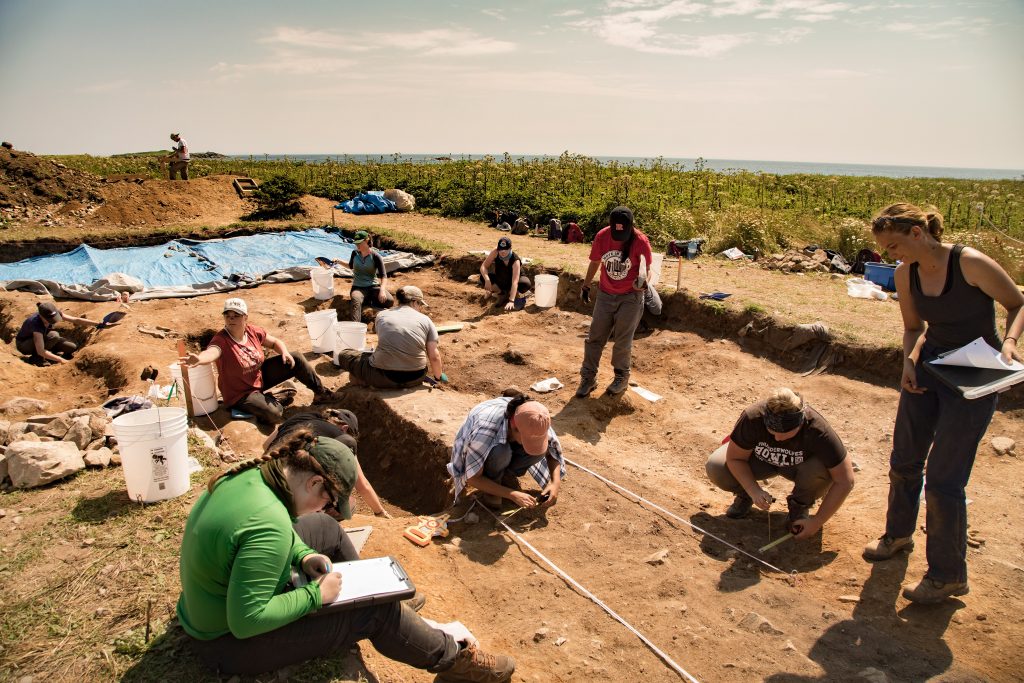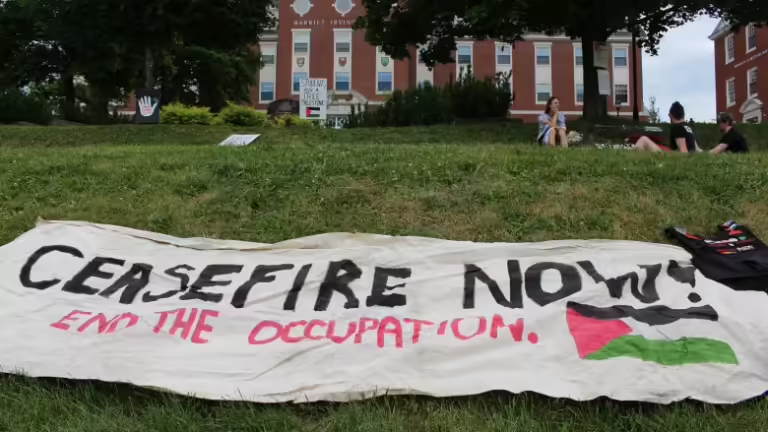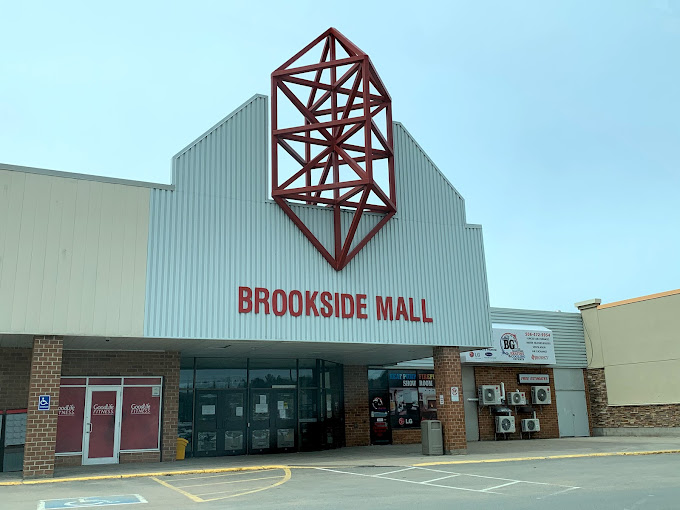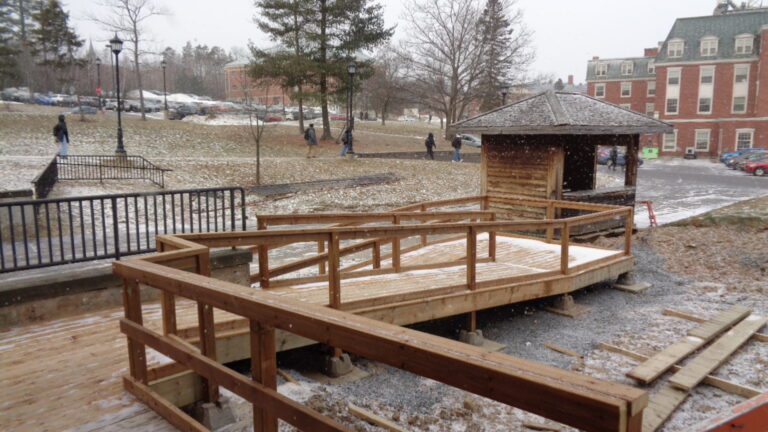Although the roughly 1100 individuals in an 18th century burial site located at Cape Breton’s Fortress of Louisbourg have been buried for 300 years, they remain subject to the ravages of time.
In this case, it is not so much time, but coastal erosion that is creeping upon the centuries-old grave site. But nevertheless, time is of the essence to preserve the burials, and in a bid to rescue the site from coastal erosion, UNB’s anthropology department has partnered with Parks Canada to coordinate a bioarchaeological field school.
The project, which began in the summer of 2017, was founded by UNB anthropology professor Amy Scott, who had contacted Parks Canada with an idea about starting a bioarchaeological field school at the Fortress of Louisbourg National Historic Site of Canada. Scott was inspired after hearing a talk given by Parks Canada archaeologist Rebecca Dunham, who described the risk of erosion on Rochefort Point where the burial site is located. For Scott, newly hired at UNB, the timing was perfect. “[I] was was actually talking about developing a field school program as a part of getting hired here,” she said.
The Fortress of Louisbourg was established in 1713, originally as a French fishing port and then later turned into a military base. Besieged twice, by New Englanders in 1745 and by the British in 1758, the British finally destroyed the Fortress’ defenses in 1760. In this area with much military activity, and with the myriad diseases that would have infected a close-knit population in the 18th century, it is understandable that the Rochefort Point burial site is as large as it is.
After 1739, the cemetery on Rochefort Point, a narrow peninsula jutting out from the Fortress, was the main burial ground for the Fortress’ inhabitants. Because of this, it provides a snapshot into the varied experiences of the people who lived at Louisbourg throughout its usage. “Many different groups are represented within that area, and it’s our job to be able to sort through them and find where these individuals fit within the mosaic of those that actually lived at Louisbourg,” said Scott.
That is the primary reason this project is so dire; given the size and diverse population of the cemetery, a lot of physical labour and intense research is needed to properly excavate, remove and categorize each burial site before they are swept into the sea. David Ebert, the Parks Canada representative for the project, feels the project is the right course of action at this time because“we can deal proactively with the issue.”
The form of archaeology being performed at the site is referred to by Scott as a “salvage excavation,” and it’s important to view this project as not only a research and teaching opportunity, but as a recovery project as well; although according to Scott, the future doesn’t hold much hope for the safety of other burial sites. “As climate change is happening, all of these archaeological sites are being threatened, and that salvage work is going to continue to grow in the coming years,” she said.
As this issue worsens, another factor is the ethical concerns regarding this project, something that UNB and Parks Canada wholeheartedly agree on. “For Parks Canada, the most important thing is that we’re treating these remains with respect and dignity. Because fundamentally, these are people who once lived in and called Louisbourg home,” said Ebert.
Scott also feels a sense of responsibility to the buried remains. “We need to protect these people because they really can’t protect themselves at this point,”she said, noting their focus on the ethical responsibility to the people buried at Rochefort Point. “Because they are people; they’re not things, they’re people. From my perspective as an academic, it’s really important that we can do that and I think it’s really important for the general public as well.”
It is these types of complex issues that students participating in the program can expect to learn, along with many other valuable experiences. Mattia Fonzo, a graduate student who participated in the program in 2017 and as a staff member in 2018, said the field school was “a great period of growth” for her, and that she “really enjoyed all the hands-on work and being out in the field with a chance to put all of that classroom knowledge to work in the field.”
“[I] really start to see them grow as students. They grow in terms of their physical skillset and what they can actually do in the field, and also the types of questions they ask, as they become more critical of the work that we do,” Scott said of the students participating in the project. Aside from the fieldwork, students in the program experience public relations training opportunities and learn to communicate their findings to the general public. “They interact with the general public, telling them what we do, why it’s important, and why we’re there. So, they certainly grow as academics, but I think they also grow in their general understanding of archaeology,” Scott said.
Students are also given experiences by Parks Canada that seem to be wholly unique to this program. “For the students, I think it’s a pretty incredible place to work. First of all, it’s a pretty picturesque spot to go out to and do your excavations everyday. Although, we’ve also arranged some experiences, through Parks Canada and Dr. Scott, for the students to really get a taste of Cape Breton,” Ebert said.
“For instance, last year all of the students got to experience firing a cannon and firing muskets. As far as I know, this has got to be the only field school where you get to fire a cannon and a musket during the program. With Dr. Scott, we’ve tried to make it not just an academic experience, but also learning the history of the Fortress, learning the culture of Cape Breton and giving students that extra insight that they might not get in other field schools.”
Along with these provided experiences, Parks Canada has interpreters on staff dedicated to the students. As Fonzo has worked directly with them before, her firsthand experience has made her very grateful for their continuing support. “Parks Canada was very helpful as we did a lot of tourist hours, so we did have interpreters that would come in and do interpretation, or speak French, which was fantastic for me because I don’t speak French,” she said.
It’s a sentiment shared with Scott. “I always say every year, we couldn’t do what we do without Parks Canada.”
UNB’s bioarchaeological field school is open to all UNB students—even those who may not have the prerequisite courses.
“While bioarchaeology might not be the very specific subdiscipline somebody wants to go into, I think gaining those skills of going out to the field, thinking about a research project in a very large sense, learning to interact with the public and all the leadership and teamwork skills are very much transferable to many different things depending on what students are interested in,” Scott said.
If this program sparks your passion, maybe because of the ethical responsibility, amazing learning and cultural opportunity or a genuinely career choice to enter into bioarchaeology, a quick look at the Field School Instagram or Facebook at UNB Bioarchaeology Field School is well worth your time—as well as their soon to be up and running website. In the meantime, there is also plenty of information at Unb.ca/cel/credit/specialized-programs/bioarchaeology-field-school.




